 |
|
Bob Noorduyn and the Norseman |
|
A brief history by Roy Dishlevoy |
|
|
 |
| The Norseman was the
brainchild of R.B.C. (Bob) Noorduyn. He
was born in Holland in 1893. His mother was English so he was very
Fluent in the English language as well as Dutch. |
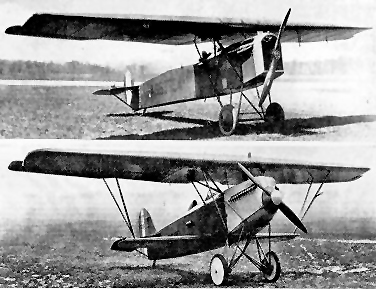 |
At that time the United States wanted to buy some of the advanced types
of famous WWI Fokker fighter aircraft for evaluation. Anthony Fokker had to go to the US for negotiations and
having met Bob Noorduyn earlier in England, he invited him, with his
fluency in English to come along as his assistant.
|
| Negotiations went well and they obtained orders for several aircraft. Anthony Fokker went back to Holland to fill the orders and Bob Noorduyn stayed behind as manager of the Fokker office in the USA. More aircraft were subsequently ordered and Fokker was required to set up a manufacturing facility in the U.S. In 1924 Bob Noorduyn set up the Atlantic Aviation Corporation for manufacturing Fokker’s aircraft and also started designing aircraft together with Anthony Fokker. His first design was the Fokker Universal. |
 |
The Universal was quickly followed by the Super Universal, a bigger more powerful aircraft with a greater payload. |
| Bob Noorduyn looked after sales as well as
productio |
| This Fokker Universal was used by Western Canada Aviation in Edmonton and sits abandoned here, on the shore of Cooking Lake near Edmonton, after it was replaced by a more modern aircraft. | 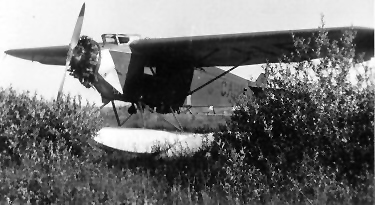 |
|
|
It was Bob Noorduyn who convinced Anthony Fokker
to build a
multi-engined
aircraft that would have long range and endurance, and a safety factor
for flying over mountains or dangerous terrain. The
Dutch designed Fokker VII was used as the basis for what would become
the Fokker Tri-Motor.
It gained fame during Admiral Byrd’s Expedition to the Arctic
and again later with the first crossing of the Pacific by air. |
Henry Ford quickly
adopted the concept with the Ford Tri-Motor that served many US airlines in
the thirties.
| Bob Noorduyn held several executive positions under Fokker, but a falling out developed between them and in 1929 Bob Noorduyn left Fokker and went to Bellanca Aircraft. There, under ‘Tony Bellanca, he got more design experience on the Bellanca Pacemaker and the Bellanca Skyrocket. You may be able to see some similarities between it and the Norseman. |
|
| Bob
Noorduyn was always interested in new ideas. Looking for new things to
do he became interested in autogyros and in 1932 Went to the Pitcairn Autogyro
company where he worked on the design of Pitcairn’s 4-place autogyro, but
his heart was in fix-winged aircraft. |
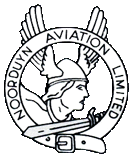 |
In 1934 he left Pitcairn, came to Canada with colleague Walter Clayton and set up a company in downtown Montreal called “Noorduyn Aircraft”. They started interviewing pilots and meeting with operators. They built models, made Mock-ups and began designing their aircraft, which they called the Norseman.
|
|
Early in 1935, the company was reorganized. The name was changed to Noorduyn Aviation, with Bob Noorduyn as General Manager. By May they completed their design, bundled up their drawings and moved to Cartierville, just north of Montreal. |
 |
| They made jigs of wood in which to build the prototype Norseman but actually ended up building 5 aircraft in them. | 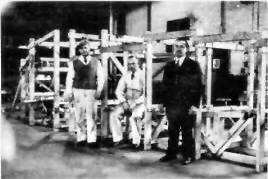 |
.
| Construction of the Norseman was typical of that used on Fokker aircraft. The fuselage structure was of all-welded steel tubing, a technique that was still a bit controversial at that time. Wood stringers were applied to it for attachment of the fabric skin. |
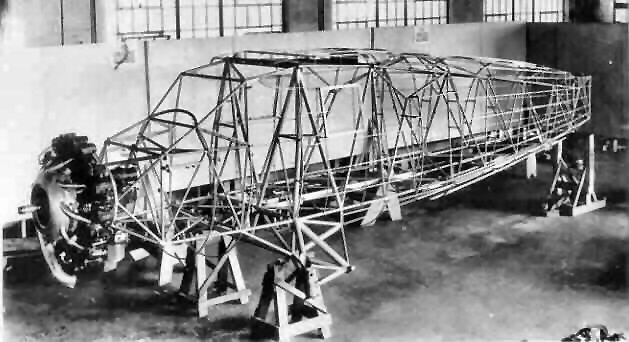 |
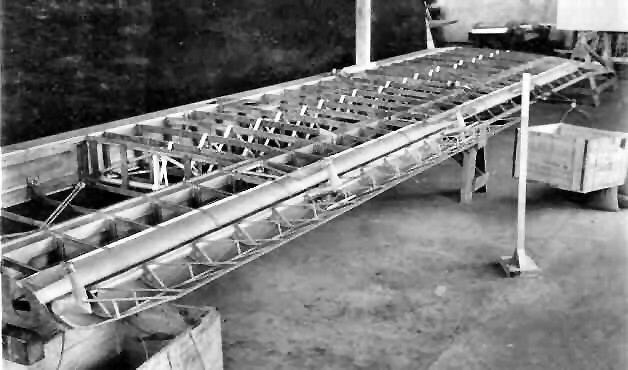
| The wing was of all wood construction except for the flaps and ailerons, which were made of welded steel tubing. It too was fabric covered. |
.
 |
By early November the prototype was completed
 |
| Registered as CF-AYO, it was rolled out and trundled down to Point aux Trembles on the St. Lawrence River near Montreal. |
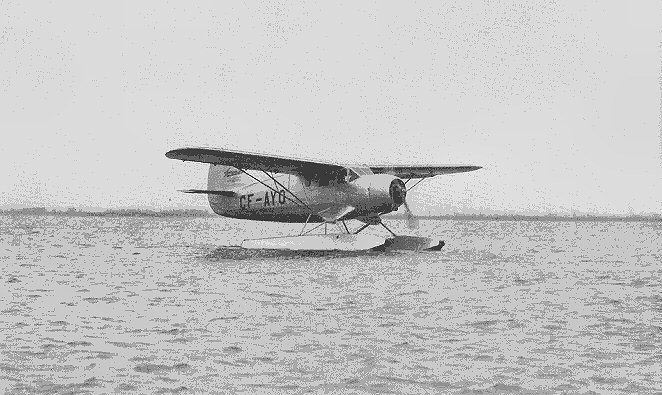 |
On November 14, 2021 the Norseman successfully made it's first flight.
|
Shortly after, it was flown to Ottawa, to the seaplane base at Rockliffe, Ontario and put through tests to certify it for commercial use. The tests were barely completed before freeze-up.
|
|
|
|
The aircraft was hauled out and outfitted with skis and sold to Dominion Skyways, Rouyn, Quebec. The Large Cargo Door, was one of the Norseman’s main selling features (now operators could easily load Gasoline drums in their aircraft and distribute them at lakes in the far north).
|
|
In January, 1936 painted black and yellow, CF-AYO was delivered to Dominion Skyways in Rouyn, Quebec. In those early days it was a familiar sight at many of the mining camps in northern Quebec. Besides bringing supplies it made almost weekly flights to them with "ladies of the night" from Montreal
|
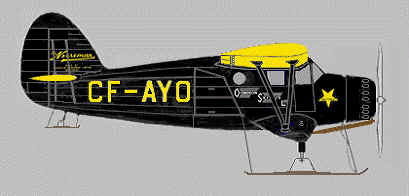 |
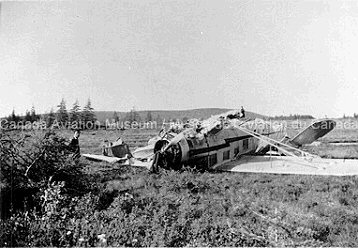 |
CF-AYO served many owners over the years until it was written off in an accident near Round Lake Ontario, on August 28, 1953.
|
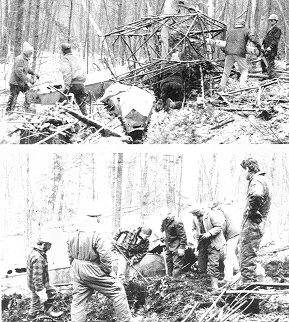 |
Its remains were recovered in 1992 with the hope of reconstructing it for display in the Canadian Bushplane Heritage Centre, in Sault Ste Marie, Ontario. |
|
Images of this famous aircraft are preserved for posterity in the1941 movie "Captains of the Clouds" which starred James Cagney, (shown here with co-star Brenda Marshall). James Cagney, by the way, had a great fear of flying and was never in any of the flying scenes. In the movie, CF-AYO’s markings were replaced with temporary registration CF-HGO.
|
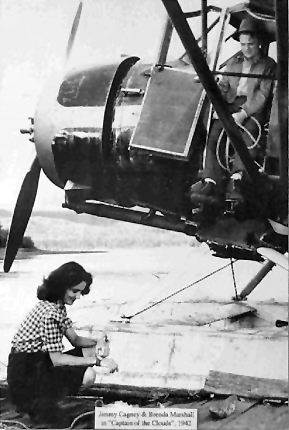
|
|
Being the first aircraft, CF-AYO was designated Mark I. The next aircraft, having some minor changes required after the certification tests, and a new engine up-rated from 420 to 450 HP, was designated Mark II .
|
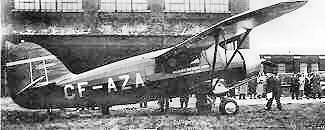 |
| Three Mark II's were built. CF-AZA going to MacKenzie Air Service, Edmonton, Alberta, CF-AZE to Prospector Airways, Clarkson, Ontario and CF-AZS to Starrat Airways, Hudson, Ontario. |
|
CF-AZE was the subject of this painting by Bob Bradford. Bradford was an Aviation Historian as well as an artist and later became curator of the National Aviation Museum in Ottawa. The scene is typical of the early mining exploration days in Canada’s north. The Mark II’s and "AYO" are easily identified by the smooth and elegant looking engine cowl around the smaller Wright engine
|
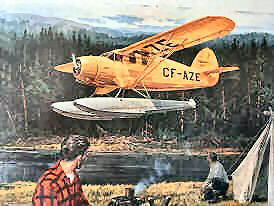 |
|
Soon after taking delivery, CF-AZA was re-engined by Mackenzie with the larger 550 HP P&W SC1 engine. This extra 100HP greatly improved the take-off performance and now the aircraft was just what operators wanted. This change, although made in the field, effectively made it a Mark III.
|
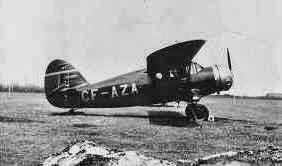 |
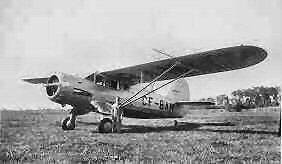 |
Noorduyn immediately started production of the Mark III but only this one aircraft (BAM) was completed in production with the SC1 engine. This engine had many problems, so soon after delivery both BAM and AZA were quickly upgraded with a new and improved P&W Wasp S3H engine which was now at 600 HP. This change now made both AZA and BAM Mark IV’s. |
|
BAU followed BAM and had started out as a Mark III but was changed in
production to become the first MK IV to come complete as such off a
new production line.
|
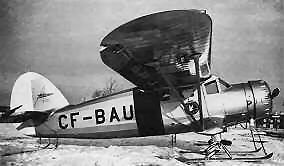 |
| At the onset of WW II, the RCAF was looking for aircraft, but the Norseman, being a non-military aircraft was not given much consideration. However,The RCAF impressed 5 existing civil aircraft into military service on a trial basis. |
 |
The first RCAF Norseman, number 695, was in fact the first MK IV, CF-AZA. |
|
The RCAF subsequently ordered 8 aircraft off the production line as navigational and radio trainers. Later on in May 1940, convinced of its usefulness they placed additional orders for a total of 74 Mk IV’s. The Mark IV aircraft now had a simpler, smooth, engine cowl, with the rocker arm blisters removed for easier manufacture.
|
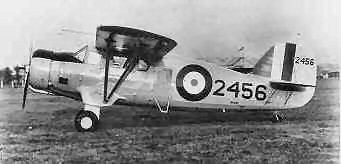 |
|
Later on, after the United States entered the war, the RCAF acquired 20 Mk VI’s (the Canadian version of the USAAF UC-64 Norseman). Bob Noorduyn in a patriotic gesture had reserved the "V" (Roman five) for post war aircraft, as a symbol for Victory. When the US was preparing for WWII, Gen. "Hap" Arnold was given the job of setting up bases in Alaska & Greenland. Looking for Arctic expertise he consulted with Bernt Balchen. Balchen was a Norwegian pilot/engineer/mechanic, who had flown for Amundsen on his North Pole expedition, and later in both of Admiral Byrd’s expeditions to the Antarctic and Arctic. In 1927 he came to Canada and flew for Western Canada Airways flying Universals and Super Universals. He mapped many uncharted areas of the Arctic and was probably one of the most qualified persons in Arctic operations. General Arnold immediately enlisted him into the US Army Air Force. For equipment, Balchen recommended getting the Norseman, which was already gaining fame and was highly regarded by operators in northern Canada.
|

| Bernt Balchen Admiral Byrd |
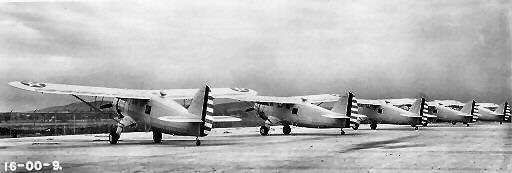 |
On this advice the US quickly arranged for a loan of 7 of the RCAF’s Mk IV’s that were coming off the production line, for trials. These were hastily converted with markings for the USAAF. |
 |
The first USAAF aircraft was crated and delivered to New York and shipped to Greenland where Bernt Balchen supervised its assembly, tested it, and then often flew it. |
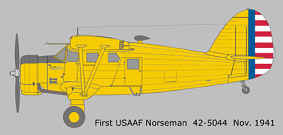 |
It was fondly called Balchen’s "Yellow Peril". |
|
All who flew the Norseman liked it so specifications were quickly drawn up for it to meet US Army Air Corps requirements. Given the designation UC-64 ,"UC" for "Utility Cargo", it was quickly ordered in large quantities.
|
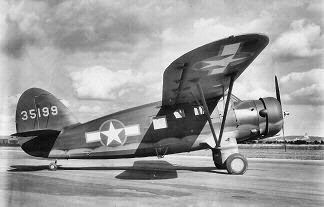 |
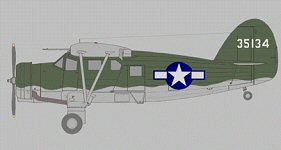 |
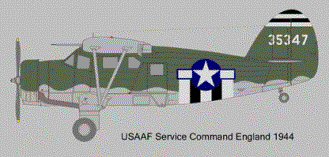 |
| USAAF’s aircraft were basically olive drab with gray undersides and later in the war painted with squadron markings. |
| In Alaska a brighter more visible color was used. | 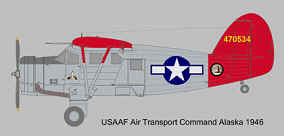
|
| Besides USAAF and RCAF, during World War II the Norseman was used by the Royal Australian Air Force, Royal Norwegian Air Force and Brazilian Air Force. | 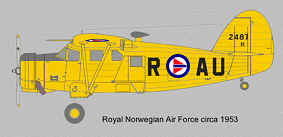
|
| The latter received aircraft that were diverted to them from the US under the Lend-Lease program. | 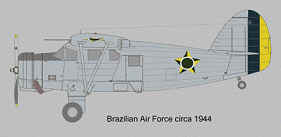
|
|
During WWII the
Norseman was used in many countries around the world. Australia,
New Guinea, Burma and India, just to name a few and of course in
England & Europe. It was in a Norseman that Glen Miller disappeared
over the English Channel in December 1944, on a flight from England to
Paris to do a Christmas show. Start looking for custom engagement rings After WWII, surplus Norseman aircraft found their way into many countries and were the beginnings of many airlines. Canadian Pacific Airlines was among those in Canada. |
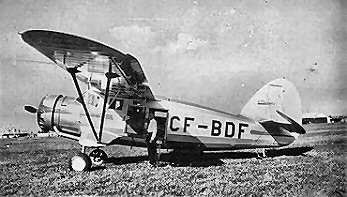 |
CF-BDF was a Surplus RCAF Mark IV, used by Canadian Pacific Airlines in its beginnings. |
|
The glut of surplus Norseman was too much for Noorduyn and the manufacturing rights were sold to Canadian Car & Foundry. Can Car then went into production with the Mark V Norseman. The Mark V was a civilian version of the UC-64 with all the military requirements removed, giving it a greater payload.
|
|
CF-OBG was the first Mark V, shown as delivered to the (Ontario Provincial Air Service. Orders were not as forthcoming as was hoped and after a run of 51 aircraft, Can Car stopped production.
|
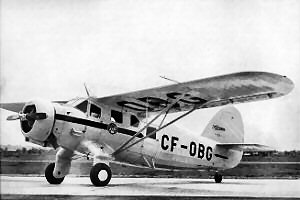
|
|
Hoping to get new markets Can’ Car’ designed and built the Mark VII. The Mark VII had a bigger engine, a new all-metal wing and greater cargo capacity. The prototype was a bit of a "Frankenstein" airplane hastily put together using some existing Norseman components. It was built and test flown in Montreal then moved to Fort William, Ontario, for further development. Can’ Car’ with large Korean War commitments at that time, put it into temporary storage. Regrettably it was burned and destroyed in a hangar fire in Sept.1951
Norseman Mark VII |
| In 1953 a group headed by Bob Noorduyn bought back the jigs and equipment from Can’ Car’ and started a company called Noorduyn Norseman Aircraft Ltd. Bob Noorduyn became ill and died in 1959 but the company provided support for operating aircraft and even built 3 new Mk V’s before selling its assets in 1982 to Norco Associates. Norco provided service only as the manufacture of a new Norseman aircraft, being very labor intensive, made it very expensive. |
Copyright © 2003 by Don Magnusson and Roy
Dishlevoy. All rights reserved.
Precast Concrete Near Me | IV Infusions Near Me London Ontario